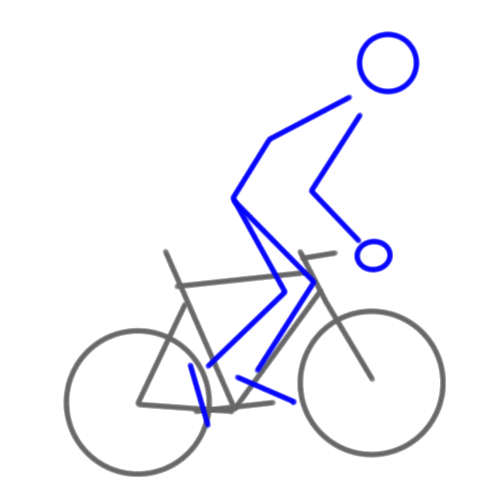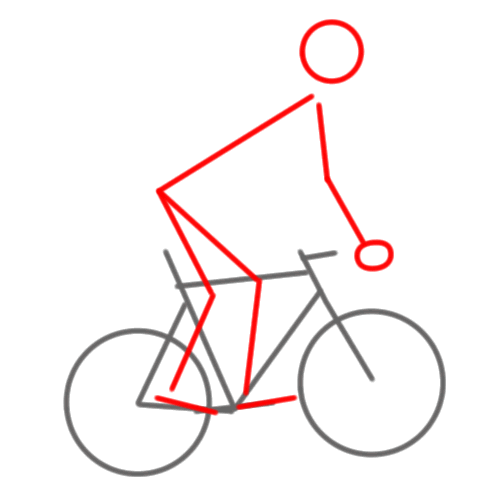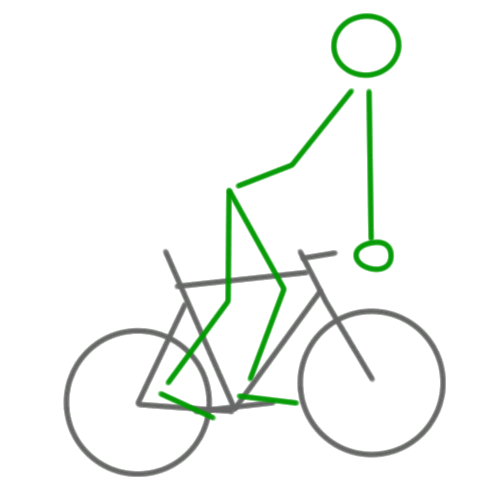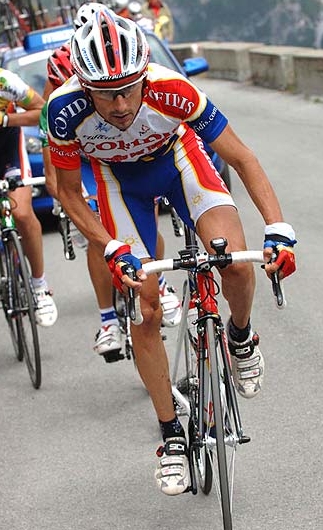Riding out of the Saddle - do you honk or dance?
The english term for cycling out of the saddle is honking, the french term is 'danceuse', dancing. An ugly term for and ugly form of cycling and a beautiful word for poetry in motion.
What happens when you stand up on the pedals and ride out of the saddle? Do you rocket forwards or lose speed? Do you feel as though you could carry on forever or do you need to sit down again right away? Does your bike feel weightless or does it have a mind of its own?
What's the point of riding out of the saddle?
Fundamentally riding out of the saddle allows you to put more of your body weight onto the pedal during the down stroke. A secondary benefit is that it allows you to change your position on the bike which relaxes the supporting muscles and takes the weight off your backside. Cyclists get out of the saddle to accelerate and to give themselves a bit of a change. We tend to do it a lot more on hills - especially short ones.
Is riding out of the saddle more efficient?
No. It uses more muscles and the energy expended to go the same speed is greater. It's also less aerodynamic.
What are the characteristics of good riding out of the saddle?
- getting the bodyweight over the front pedal (laterally & longitudinally)
- pedaling in circles (ankling)
- keeping the body relatively still
- relaxation
- control
Bodyweight:
Getting the body weight onto the front pedal requires you to get your knees
as far forwards as possible and to tilt the bike. There should be very little
weight on the handlebars. This is easiest to achieve by tucking your bum in
and impossible to achieve by sticking your bum out. It is the job of the hands
and arms to control the tilt of the bike.
 |
 |
 |
|
Yes! |
No! |
No! No! No! |
Pedaling in circles:
Simply standing on the pedal will force it to the bottom. Good out of the saddle
riding requires you to flex your ankle strongly to create a curved downstroke
whilst lifting the other leg out of the way of the pedal coming up. If this
action is strong enough there should be no dead spots and no break in the rhythm.
Keeping the body relatively still:
The general sense should be that you keep your head and body still & swing
the bike from side to side (rather than swinging your body back and forth across
the bike). Trying to keep your body rigidly still results in very tense style,
however, so don't take this too literally!
Relaxation:
Relaxation is the key to doing anything well. Riding out of the saddle uses
a lot of muscles: Besides the legs the arms, shoulders, chest, back & core
muscles all play their part in providing a strong and stable platform for transmitting
power. As I mentioned above, there should be little or no weight on the arms
- you should not feel as though you are doing press-ups. It's important to keep
a very light grip on the handlebars.
Control:
Unless you are sprinting on the drops you should hold onto the brake hoods.
Holding on anywhere else compromises your control of the bike. In general, you
have better control the wider, and further forward, your hands are (this is
why MTB riders fit bar ends). Some riders hold the hoods with all of their fingers
behind the brake levers: Others, particularly with the increasing size and ergonomic
sculpting of brake hoods, have a finger or two in front of the lever.
How to improve:
Ride slowly in a big gear. This slows the cadence enough to work on
the movement pattern.
Exaggerate your ankle movement - especially during the up stroke. I tip
my toes vertically downwards to prevent me pressing down. See my page on LFC
pedalling.
Throw your knees forwards during the upstroke. Think about throwing your knees over the handlebars. The biggest disadvantage
of tribars is that the arm pads often occupy the space that your knees want to be in when riding out of the saddle.
 |
 |
Riding out of the saddle with Power Cranks is an interesting experience and demonstrates how much difference unweighting the recovering crank can make. As soon as you stand on the front crank you have no control of the speed at which it turns - other than to speed it up. To keep the cranks aligned you simply have to recover the other one at the same speed. The result, unless you are going up a steep hill, is very rapid acceleration. Riding out of the saddle on the flat, in a small gear, is impossible for more than a couple of seconds.
(The act of) standing up and sitting down.
I mention this because of the havoc that can be caused in a bunch or group
by a rider who doesn't stand up or sit down properly - especially riding uphill.
The cause of the havoc is the 'kick back' which happens if you don't lift or
lower yourself using the front leg during the down stroke. Keep the pressure on!
Does the bike make any difference?
Riding out of the saddle is one time that a bike's characteristics really show: The overall weight, the stiffness, steering geometry, wheels, tyres and tyre pressure all have a substantial influence. Riding out of the saddle is easiest on a light, stiff bike, with short chainstays; light, stiff, low-profile wheels; light, hard, narrow, slick tyres and responsive steering. It's most difficult on a heavy, flexible bike with balloon tyres and slack steering. Aerodynamic wheels, especially on the front, make throwing the bike from side to side harder.
Tim Williams
Feb 2006
